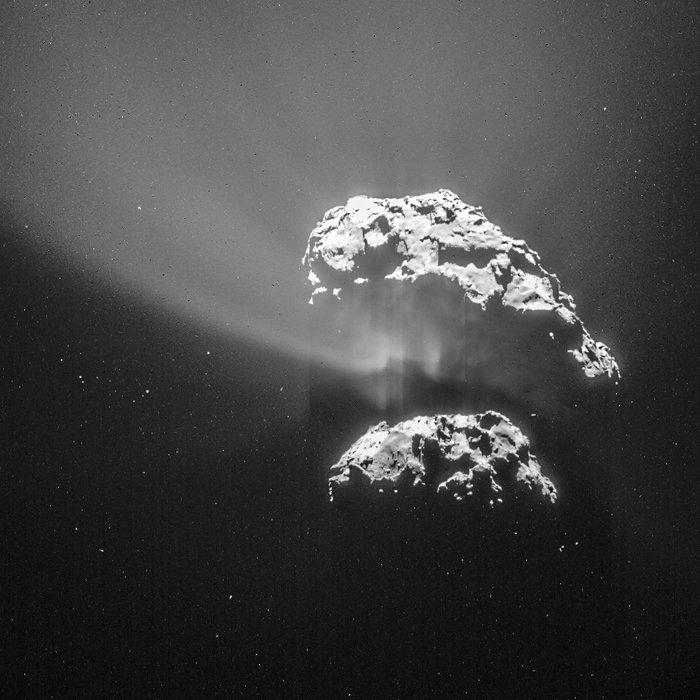
A European spacecraft mission captured some rare images of a comet passing in front of the sun.
A rare picture of a comet silhouetted against the sun was captured by the Rosetta, a European Space Agency (ESA) spacecraft on March 27. The Rosetta was only 205 miles away from Comet 67P/Churyumov-Gerasimenko comprised of two lobes, resembling a set of fused snowballs.
The most recent photograph shows the larger of the two balls on top. Shadows are seen spreading onto the coma, the dusty atmosphere surrounding the comet. In February into March of this year, mission leaders navigated the spacecraft close to the frozen mass in order to study the surface’s details. Researchers then maneuvered the Rosetta further away to examine the region around 67P.
“Thanks to the combination of a long, four-second exposure, no attenuation filter and a low-gain setting on the analogue signal processor of NAVCAM (a setting that is used to image bright targets), the image reveals the bright environment of the comet, displaying beautiful outflows of activity streaming away from the nucleus in various directions,” ESA officials released on a news blog for the comet mission.
Each pixel of the image corresponds to 28-miles against a backdrop of stars. A pair of Russian astronomers discovered the comet in 1969, which orbits the sun every 6.44 years. Rosetta was launched in March 2004 to track Comet 67/P after making three passes by the Earth between 2005 and 2009.
Rosetta observed Asteroid Steins followed by a passing of Asteroid Lutetia in the summer of 2010. Rosetta reached Comet 67/P on Aug. 6, 2014. The event was reported in Tech Times.
Image credit: ESA/Rosetta/NAVCAM

Leave a Reply